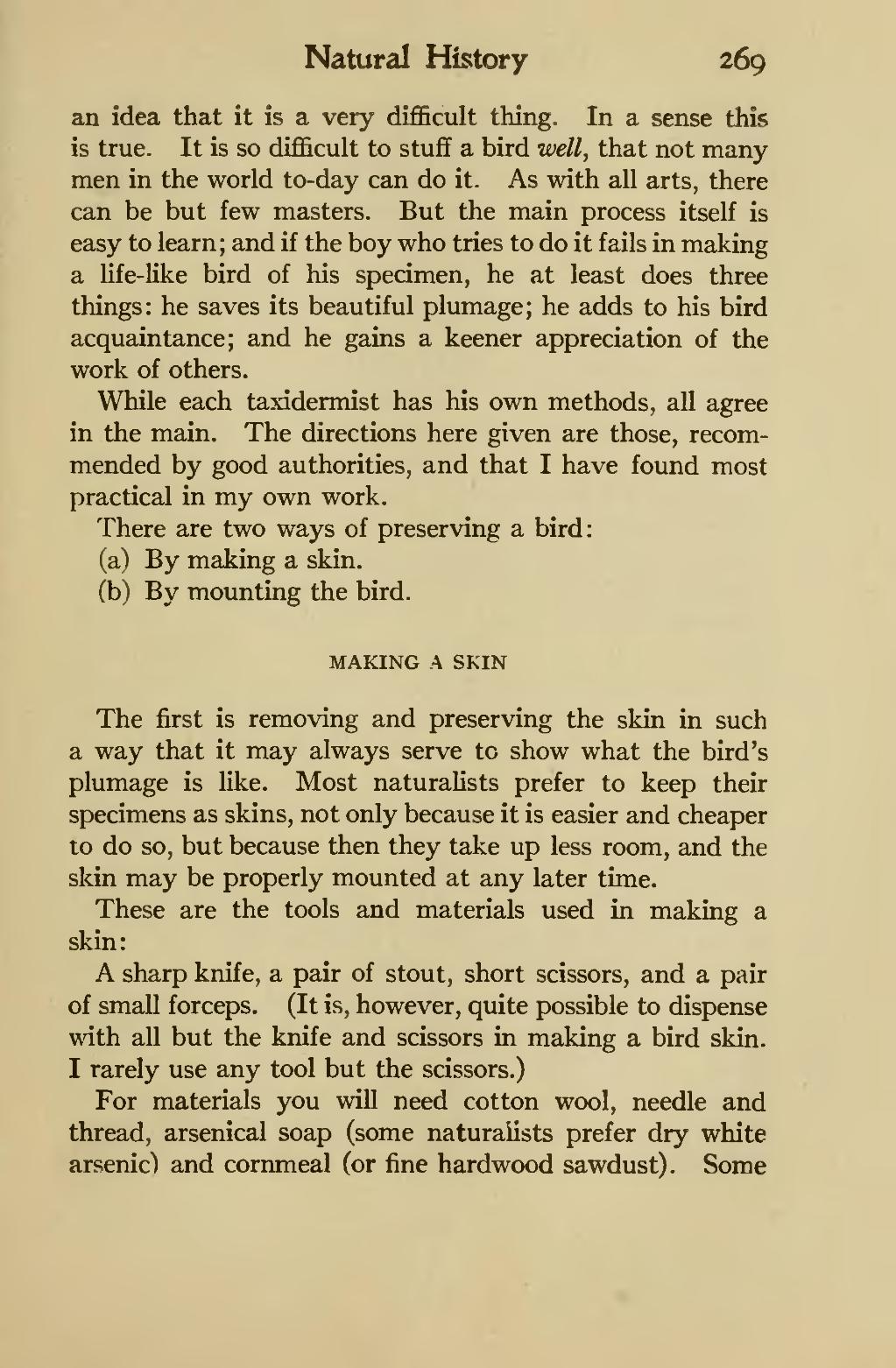Natural History 269 an idea that it is a very difficult thing. In a sense this is true. It is so difficult to stuff a bird well, that not many men in the world to-day can do it. As with all arts, there can be but few masters. But the main process itself is easy to learn ; and if the boy who tries to do it fails in making a Ufe-like bird of his specimen, he at least does three things: he saves its beautiful plumage; he adds to his bird acquaintance; and he gains a keener appreciation of the work of others. While each taxidermist has his own methods, all agree in the main. The directions here given are those, recom- mended by good authorities, and that I have found most practical in my own work. There are two ways of preserving a bird: (a) By making a skin. (b) By mounting the bird. MAKING A SKIN The first is removing and preserving the skin in such a way that it may always serve to show what the bird's plumage is Hke. Most naturalists prefer to keep their specimens as skins, not only because it is easier and cheaper to do so, but because then they take up less room, and the skin may be properly mounted at any later time. These are the tools and materials used in making a skin: A sharp knife, a pair of stout, short scissors, and a pair of small forceps. (It is, however, quite possible to dispense with all but the knife and scissors in making a bird skin. I rarely use any tool but the scissors.) For materials you will need cotton wool, needle and thread, arsenical soap (some naturalists prefer dry white arsenic) and cornmeal (or fine hardwood sawdust). Some
Stránka:book 1922.djvu/299
Z thewoodcraft.org
Tato stránka nebyla zkontrolována
